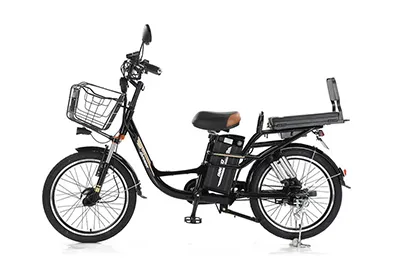
- Afrikaans
- Albanian
- Amharic
- Arabic
- Armenian
- Azerbaijani
- Basque
- Belarusian
- Bengali
- Bosnian
- Bulgarian
- Catalan
- Cebuano
- Corsican
- Croatian
- Czech
- Danish
- Dutch
- English
- Esperanto
- Estonian
- Finnish
- French
- Frisian
- Galician
- Georgian
- German
- Greek
- Gujarati
- Haitian Creole
- hausa
- hawaiian
- Hebrew
- Hindi
- Miao
- Hungarian
- Icelandic
- igbo
- Indonesian
- irish
- Italian
- Japanese
- Javanese
- Kannada
- kazakh
- Khmer
- Rwandese
- Korean
- Kurdish
- Kyrgyz
- Lao
- Latin
- Latvian
- Lithuanian
- Luxembourgish
- Macedonian
- Malgashi
- Malay
- Malayalam
- Maltese
- Maori
- Marathi
- Mongolian
- Myanmar
- Nepali
- Norwegian
- Norwegian
- Occitan
- Pashto
- Persian
- Polish
- Portuguese
- Punjabi
- Romanian
- Russian
- Samoan
- Scottish Gaelic
- Serbian
- Sesotho
- Shona
- Sindhi
- Sinhala
- Slovak
- Slovenian
- Somali
- Spanish
- Sundanese
- Swahili
- Swedish
- Tagalog
- Tajik
- Tamil
- Tatar
- Telugu
- Thai
- Turkish
- Turkmen
- Ukrainian
- Urdu
- Uighur
- Uzbek
- Vietnamese
- Welsh
- Bantu
- Yiddish
- Yoruba
- Zulu
Aug . 07, 2024 13:30 Back to list
Guide to Fine-Tuning Your Mountain Bike's Rear Derailleur for Optimal Performance and Shifting Accuracy
Adjusting the Rear Derailleur on a Mountain Bike A Comprehensive Guide
When it comes to maintaining your mountain bike, one of the most important components to keep in good working order is the rear derailleur. This essential part of your bike’s drivetrain is responsible for shifting the chain between the various gears on the rear cassette, enabling you to tackle different terrains with ease. However, over time, your rear derailleur may require adjustment due to wear and tear, or after a crash or other impact. Here is a comprehensive guide to help you adjust your rear derailleur effectively.
Tools You’ll Need
Before getting started, gather the necessary tools
1. 2.5mm or 3mm Allen wrench (depending on your derailleur) 2. Phillips screwdriver 3. Chain tool (if you need to remove the chain) 4. Bike stand (optional but recommended)
Step 1 Assess the Current Situation
Before making any adjustments, take a moment to evaluate the performance of your bike. Pay attention to how the derailleur behaves when shifting through the gears. Is it skipping or making noise? Does it struggle to shift up or down? Identifying these issues will guide your adjustments.
Step 2 Adjust the Limit Screws
The rear derailleur has two limit screws marked H (high) and L (low). These screws control the movement range of the derailleur to prevent the chain from falling off the cassette.
1. High Limit Screw (H) - This sets the position of the derailleur for the smallest cog (highest gear). Shift to the smallest cog, then check if the derailleur is aligned properly. If the chain is rubbing against the next larger cog, turn the H screw counterclockwise a quarter turn at a time until it aligns perfectly with the smallest cog.
2. Low Limit Screw (L) - This sets the position for the largest cog (lowest gear). Shift to the largest cog and check the alignment. If the chain is rubbing against the derailleur or is misaligned, turn the L screw clockwise until the derailleur properly guides the chain onto the largest cog.
adjusting rear derailleur on mountain bike

Step 3 Adjust the B-Tension Screw
The B-tension screw controls the distance between the top pulley of the derailleur and the cassette. This is crucial for smooth shifting, especially when shifting to larger cogs.
1. Shift to the largest cog. 2. Adjust the B-tension screw to ensure there is a gap of approximately 5-6mm between the top pulley and the largest sprocket. If the gap is too large, it can lead to poor shifting; if it’s too small, the chain may rub against the derailleur.
Step 4 Fine-Tune the Cable Tension
If the derailleur is still not shifting smoothly after adjusting the limit and B-tension screws, you may need to adjust the cable tension.
1. Shift to the middle cog and observe the shifting action. 2. Use the barrel adjuster (usually found on the shift lever or the derailleur) to increase or decrease tension. Turning the barrel adjuster counterclockwise increases tension, while clockwise decreases it. Adjust until the shifting is smooth and precise.
Step 5 Test and Fine-Tune
Once you’ve made your adjustments, it’s essential to test your bike. Shift through all the gears while riding, paying attention to any hesitation or noise. You may need to go back and tweak the limit screws and cable tension to perfect the shifting.
Conclusion
Adjusting the rear derailleur of a mountain bike isn’t overly complicated but requires careful attention to detail. Regular maintenance will enhance your riding experience and prolong the life of your bike. With practice, you’ll find that making these adjustments becomes an intuitive part of your bike care routine. Enjoy your ride, and feel confident knowing your bike is performing at its best!
-
The Ultimate Kids' Four-Wheeler Experience
NewsJul.09,2025
-
The Ultimate Guide to Mountain Bikes: Gear Up for Your Ride
NewsJul.09,2025
-
The New Age of Cycling: Electric Bikes for Every Rider
NewsJul.09,2025
-
The Best Kids Bicycles: Ride in Style and Safety
NewsJul.09,2025
-
The Best 3-Wheel Scooters for Kids: Fun, Safety, and Adventure
NewsJul.09,2025
-
Revolutionize Your Ride: Affordable Electric Bikes
NewsJul.09,2025
-
Finding the Perfect Mountain Bike for Every Rider
NewsJul.09,2025



